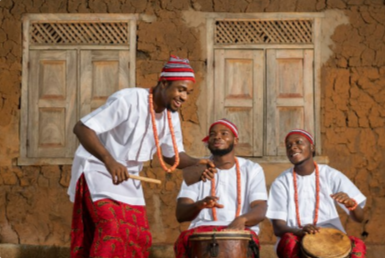Cultural and heritage journeys are among the most enriching travel experiences in the motherland-the United States. It puts tourists in the heart of all the history, traditions, and other local customs synonymous with the identity of the nation. Such travel fosters an actual manifestation of salvation for the historical landmarks and cultural practices. Tourism ensures that the bonds between communities have depth of understanding and appreciation. Cultural and heritage travels for a travel agency dealing with the USA would provide a beautiful complement in this regard as it would showcase the rich stories and traditions that the country has to offer. We tend to examine how cultural and heritage travel within the USA preserves history and connects communities through the following article.
Cultural Travel Preservation in History
There are innumerable historical landmarks and sites within the United States that speak of its rich yet complex past. To these important places, cultural and heritage travel brings the attention needed to ensure that they are well kept and preserved for future generations.
1. Restoration and Maintenance of Sites
Historical tourism coincides with great sites such as Independence Hall in Philadelphia, the Alamo in Texas, Gettysburg National Military Park in Pennsylvania, and all these places will benefit from visitors’ money that will be used to restore and maintain such sites. Their popularity will also encourage federal and local agencies to invest in those sites-for example, the Statue of Liberty, Yellowstone National Park, and other UNESCO World Heritage Sites in the USA, which see most funds for their conservation through tourism activity.
1. Promoting Traditional Crafts
Communities known for their craftsmanship often rely on cultural tourism to sustain their traditions. For instance, travelers visiting Santa Fe, New Mexico, can purchase handmade Native American jewelry and pottery, supporting local artisans. Similarly, Appalachian communities in states like Kentucky and West Virginia showcase traditional quilting and woodworking, which visitors can learn about through workshops and demonstrations.
2. Celebrating Festivals
Local festivals are an excellent way for communities to share their traditions with visitors. Events like Mardi Gras in New Orleans, the Albuquerque International Balloon Fiesta, and the Cherokee National Holiday in Oklahoma provide a platform for cultural expression. These festivals not only attract tourists but also inspire locals to continue celebrating and preserving their heritage.
Connecting Communities Through Travel
Cultural and heritage travel creates meaningful connections between people from diverse backgrounds. By experiencing the traditions and history of different communities, travelers develop a deeper respect and understanding of others.
Fostering Cultural Exchange
When travelers participate in cultural activities, such as attending a powwow, joining a traditional cooking class, or visiting a historical reenactment, they engage in cultural exchange. These experiences allow visitors to connect with locals on a personal level, fostering mutual respect and understanding. For example, visiting Amish communities in Pennsylvania provides insight into their simple way of life, while also encouraging conversations that bridge cultural gaps.
2. Building Personal Connections
Cultural travel often leads to lasting relationships. Whether staying with a host family, participating in community-led tours, or attending local events, travelers have opportunities to bond with residents. These connections often go beyond the travel experience, creating a sense of global unity and shared purpose.
Sustainable Tourism for Cultural Preservation
For cultural and heritage travel to be effective, it must be sustainable. Responsible tourism ensures that the benefits of travel are long-lasting and do not harm the communities or environments being visited.
1. Minimizing Environmental Impact
Many cultural and heritage sites are located in fragile environments. Travelers must follow guidelines to protect these areas, such as avoiding littering, respecting boundaries, and adhering to eco-friendly practices. For example, national parks like Yosemite and the Grand Canyon are both cultural and natural treasures that require careful management to prevent overcrowding and damage.
2. Supporting Local Economies
Travelers can make a positive impact by supporting locally-owned businesses. Dining at local restaurants, purchasing handcrafted souvenirs, and using local guides ensure that the economic benefits of tourism reach the community. This support empowers residents to continue preserving their heritage.
Popular Cultural and Heritage Destinations in the USA
1. Washington, D.C.
As the capital of the United States, Washington, D.C., offers an abundance of cultural and historical sites. From the Smithsonian museums to the National Mall, travelers can explore the country’s history and achievements.
2. New Orleans, Louisiana
Known for its jazz music, Creole cuisine, and vibrant festivals, New Orleans is a cultural melting pot. Visitors can experience the city’s rich heritage through its music, food, and historic neighborhoods.
3. Charleston, South Carolina
Charleston is a city that blends colonial history with Southern charm. Visitors can explore historic plantations, learn about African American history, and enjoy the city’s preserved architecture.
4. Santa Fe, New Mexico
Santa Fe’s Native American and Spanish influences make it a unique destination for cultural travel. The city’s art galleries, markets, and museums highlight its rich heritage.
Conclusion
Cultural and heritage travel in the USA is more than just a way to see new places—it’s a journey into the heart of the nation’s history and traditions. By visiting historical landmarks, supporting traditional crafts, and engaging in cultural exchanges, travelers play a vital role in preserving America’s heritage. At the same time, they build meaningful connections that bridge cultural divides and foster understanding. As a travel agency, promoting these experiences not only helps your clients create unforgettable memories but also contributes to the preservation of the country’s rich cultural tapestry. With sustainable practices, cultural and heritage travel can continue to enrich lives and protect the stories that make the United States unique.



